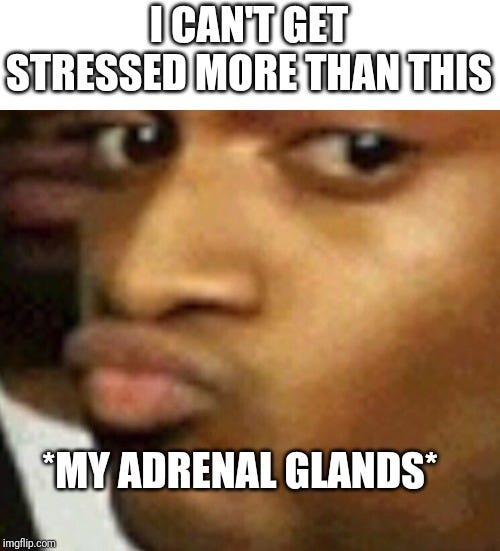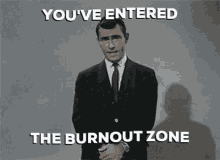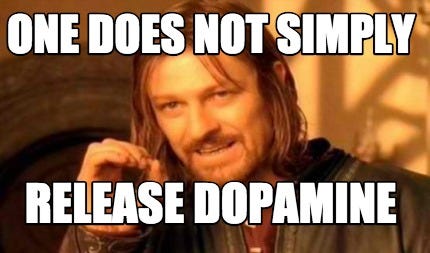How to hack burnout
The ultimate guide to burnout: the biology, stages, underlying factors, key metrics, and effective mitigation strategies.
I was lying in bed trying to avoid looking at the clock.
Accidentally, I glanced in the direction of my phone, and 4:00 a.m. sign staring back sent a shockwave through me. How am I going to survive tomorrow’s executive review? Oh, this is going to suck terribly, I thought as it ran through my head.
But no matter what I did, I simply couldn’t get to myself to sleep. There was a deep numbing anxiety that simply didn’t go away. Little did I know, but this was an indication of a mid-stage burnout.
Burnout is real.
Tech industry is probably one of the worst when it comes to burnout. Every 2 out of 5 workers have experienced burnout to some degree. Approx. ~42% consider quitting their jobs in the next 6 months.
Anecdotally, there’s always a colleague around who wants to quit and do something non-tech - farm veggies, produce cheese, bake bread or roast coffee.
These are just nicely coated stories that often conceal real burnout.
So I went on a quest to figure it out. Turns out there’s so much written on the topic yet so little content has substance. I’ve skimmed over 10+ books, ~50+ studies and meta-analyses to get down to the bottom of the issue.
My goal was to come up with actionable, down-to-earth strategies for mitigating burnout.
This article is the no-BS essence of the key findings. I’d go as far as saying it’s the most comprehensive manual you can find compressed into a single article.
Today’s article
Burnout Explained. The biology, the contributing factors and stages of burnout.
Actionable burnout hacks. How to track burnout with data and hack your way out of it.
TL;DR. Key take-aways from the article for people on the go (2 minute read)
+ A bonus → An AI podcast of the article for those who’d prefer listening instead of reading.
📝 Word count: 3128 words
⏱️ Reading time: ~24 minutes
🔊 AI Podcast Version of the Article
Powered by Google’s NotebookML
🔥 Burnout Explained
🧬 The Biology of Burnout
Burnout is widely discussed, yet still remains a deeply under-researched topic. The main issue is that it’s hard to decouple burnout from other conditions (e.g. Chronic Fatigue Syndrome).
Of the 655 studies published to date, only 79 (~12%) examine the association of biomarkers with burnout. Considering there are thousands of different biomarkers, this is a drop in the ocean. Additionally, those exploring the nervous and immune systems make up only about half of that.
There’s hope. A major 12-year longitudinal study from Dresden is aiming to uncover the biology of burnout at the biomarker level. However, the results won’t be available until early 2027.
Hence, most of what we know today is based on the research of stress rather than burnout specifically.
So what happens during stress?
When your body experiences stress, the so-called HPA Axis (hypothalamus → pituitary gland → adrenal glands) is activated.
In simple terms, a small region in the brain called hypothalamus sends a signal to pituitary gland by releasing a hormone called corticotropin (CRH).
In reaction to this, the pituitary gland is releasing another hormone known as adrenocorticotropic (ACTH). This is being shot directly into the bloodstream.
The final act of this play happens in the adrenal glands. ACTH prompts the adrenal glands to produce the key stress hormone called cortisol.
The result is the classic “fight or flight” response, where your body is primed for action and fueled with energy. However, this comes at a cost: your blood sugar levels increase, and your immune and digestive systems are temporarily suppressed.
If this process drags on for too long, the body starts adapting to extreme levels of cortisol through two possible strategies. The first is called a “cortisol resistance”, where the adrenal glands produce much less cortisol. The second is “blunted cortisol response”, where the body becomes less responsive to the hormone overall.
Of course, this is a simplification, as many more factors and hormones are involved, but it provides a general understanding.
📉 Stages of Burnout
There are three stages of burnout, each representing a progressively worsening response to cortisol triggers within the body.
1️⃣ Cortisol Resistance
Cortisol resistance develops in response to prolonged, low-level stress. Most victims of work-related burnout fall into this category.
When one develops a cortisol resistance, the typical symptoms are - anxiety, mood disturbances, fatigue and low energy and abdominal weight gain.
It takes between several weeks and a few months to start developing the initial symptoms.
The fastest I’ve developed cortisol resistance was around ~3 months of intense work. But it all varies and depends on the context, the burnout factors and your sensitivity to them.
2️⃣ Blunted Cortisol Response
The blunted response typically occurs after a series of acute, stress-inducing events - sudden, short-term shocks that drive cortisol levels sky-high.
Blunted cortisol response is typically associated with feelings of overwhelm, difficulty waking up, mental fog and apathy.
The most worrisome part is that over time, untreated cortisol resistance can couple with a blunted response. Hence, the symptoms described above will overlap.
It takes anywhere from 6 months to 2 years to develop a blunted cortisol response.
3️⃣ HPA Axis Dysfunction
If stress levels remain high for 2+ years, we enter a more severe stage of HPA axis dysfunction.
At this point, the demand for cortisol in the body becomes so high that the adrenal glands can’t keep up with its production. Many sources refer to this specific stage as “burnout”. Tehnically this is the most accurate description.
The most obvious symptoms at this stage include trouble sleeping (short deep sleep cycles, difficulty falling asleep), mood swings, exhaustion, and constant mental fog, often leading to full-blown apathy.
The longer you remain in this state, the higher the risk of this stage becoming permanent and irreversible. Even several years of full relaxation may only result in partial restoration of your HPA system. This is serious stuff.
In Japan, this condition is called “karoshi”, which literally means death from overwork.
If reading this really clicks with how you currently feel, check the metrics below for confirmation. If your suspicions are validated, stop whatever you’re working on immediately - either change your team or leave the company right away.
⚖️ The Burnout Factors
Three different groups of factors can accelerate burnout: global factors that form the context you’re in (which you have little control over), mid-level factors that create your local environment (which you can change, but at a cost), and your personal routines and habits.
Additionally, each of us has a different sensitivity to these factors. For example, someone who is a people-pleaser and constantly seeks validation, fearing conflict or challenges, will burn out quickly when placed in a difficult and unresponsive environment.
Your sensitivity
We all have varying levels of sensitivity to "burnout factors," which depend on individual personality traits and coping strategies.
For simplicity, we can categorize personality traits into four main dimensions, using a scale from 0 to 100: perfectionism, neuroticism (proneness to anxiety), approval-seeking, and introversion/extraversion.
Individuals who score higher in perfectionism, neuroticism, and approval-seeking, and who lean more towards introversion, are likely to burn out much faster.
Coping strategies revolve around our way of dealing with validation.
Some people are challengers and seek validation by opposing other people’s views, some are peacemakers, others are performers and do whatever it takes to win in the game.
Global
Global factors typically relate to the context you’re in.
Say a company, its culture, and the existing set of values. Even if they are not explicitly written, these values still exist. They cascade from C-level leaders down to key decision-makers through the behavior nuances.
If this context misaligns with who you are as a person or is in strong opposition to your coping strategies, your cortisol levels will remain constantly elevated.
You cannot change this context unless you leave the company or adjust your sensitivity to it.
Local
Your local context is defined by your workload and team climate.
In the so-called International Classification of Diseases (or ICD), burnout is labeled as relating to a “mismatch between the workload and available resources”.
Your actual capacity might be spread thinly like a jam across multiple responsibilities. You are delivering on every single commitment, but they just don’t seem to end. No matter how efficiently you cut the non-essential and focus on core priorities, the workload keeps piling up.
This is a scenario many tech workers know all too well. The root cause often lies in the gap between headcount and workload. It’s difficult to quantify or pinpoint exactly, but if you’re constantly under stress, despite repeated efforts to prioritize and limit tasks, it’s a strong sign your team is understaffed.
One significant factor that can greatly increase your chances of burnout is toxic colleagues. Narcissistic, passive-aggressive, stonewalling, gaslighting, or controlling behaviors can ripple through the entire team.
Personal
On a personal level, an employee might be affected by both work-related habits and lingering grudges.
Work-related habits
We live in an always-on communication culture, with Slack notifications arriving 24/7. Each notification triggers a cortisol spike, making us feel the need to respond immediately.
In a company of 1,000 people, there could be 499,500 unique Slack conversations between two individuals, and over 10 ^ 107 potential channels with more than two participants. These numbers are incomprehensible. The larger the organization, the more such connections exist.
Each incoming Slack message or email comes with an implicit deadline and requires cognitive effort to process. Switching between these tasks drains even more mental energy and further elevates cortisol levels.
The drive to be hyper-productive is often counterproductive. The more you react and respond, the higher your cortisol levels rise. The higher the cortisol, the more stressed and less engaged you become. As stress increases, your cognitive abilities decrease. It’s a vicious cycle.
Personal grudges
Grudges often stem from issues like role ambiguity, recognition, and growth trajectory. Product managers, by default, are expected to have context on many things yet possess little authority. Role ambiguity is simply part of the job.
Recognition for contributions and a clear career growth roadmap were covered in one of my previous articles. Simply put, if there’s no recognition or clear path for career advancement, anxiety will increase. And anxiety brings along elevated cortisol levels.
🛠️ Actionable burnout hacks
Tracking burnout
Of course, you can do a blood or saliva test to measure your cortisol levels, but that provides only a single snapshot in time.
The issue here is that cortisol levels fluctuate throughout the day. Cortisol peaks in the morning (when most tests are done) and should gradually decrease by bedtime.
Additionally, blood tests don’t allow you to track changes dynamically. If you make lifestyle adjustments or use the hacks listed below, how would you know if they are effective?
You won’t - unless you take the “Bryan Johnson” route and hire a medical team to continuously monitor your health indicators. But that’s a hefty investment.
The simplest way to address this problem is by tracking proxy metrics - indicators that strongly correlate with cortisol levels, are sensitive to change, and can be tracked with conventional devices like the Apple Watch.
Fortunately, this is quite doable. There are three directionally reliable indicators: Heart Rate Variability (HRV), Resting Heart Rate (RHR), and Respiratory Rate (breaths per minute).
HRV tracks the balance between your sympathetic (fight-or-flight) and parasympathetic (rest-and-digest) nervous systems. A lower-than-average HRV for your age group often indicates high stress levels.
RHR reflects your cardiovascular response to stress. Cortisol prompts your heart to pump faster and more forcefully, increasing cardiac output.
Respiratory rate indicates how much oxygen your body is trying to supply in response to perceived threats. In the early stages of burnout, you may experience hyperventilation, while in the later stages, shallow and rapid breathing becomes common.
There is solid evidence, supported by statistically significant studies, linking each of these indicators to burnout (e.g. HRV, RHR, RR).
If you’re using an Apple Watch, you can find all these metrics in the Health app on your iPhone.
Benchmarks
The lower your HRV and the higher your RHR and RR, the deeper your level of burnout.
In a typical burnout case, the first metric to change is RHR. It’s a strong indicator of stress but, on its own, not enough to confirm burnout. When HRV drops and RHR spikes together, this signals the early stages of burnout.
Changes in respiratory rate usually appear only in the later stages of burnout, often presenting as shallow and rapid breathing.
Actionable strategies
In 2017 Kirsi Ahola decided to do a massive meta-analysis of burnout mitigation studies. Together with her colleagues she has identified 4430 studies, out of which only 14 met scientific selection criteria.
Among those, the sample sizes were too small to draw firm conclusions about the effectiveness of the proposed strategies (CBT ranked as the most effective).
So we’re literally in the dark. There’s no solid research on the topic. Hence, we’ll have to make assumptions and extrapolate ideas from the existing “stress coping” strategies.
I don’t want to load you with conventional wisdom that you already know - sleep 8h, exercise regularly, eat well, meditate. Yes, ya’ll know that.
Assuming all the healthy stuff listed above is your baseline: how can you manage cortisol production to maintain efficiency and avoid burnout?
Turns out there are a few actionable strategies here.
Cortisol Feedback Loop
The tricky thing about cortisol is that it’s adaptive.
Our body strives for balance. When cortisol spikes, a drop inevitably follows, often leaving you feeling fatigued or drained.
The same applies to proactive cortisol reduction strategies. If you continuously dose on adaptogens like Ashwagandha, which have a proven cortisol reduction effect (around 28-30%), you may experience some nasty side effects.
Sudden bursts of anxiety may arise, and worse, cortisol production could be disrupted permanently, leading to persistent fatigue. But there’s more to it. Without proper cortisol production, the same stress response would be spread to other organs in your body. Yuck. That’s something we want to avoid.
The most effective ways to manage cortisol are indirect - by maintaining baseline dopamine levels and altering your sensitivity to burnout factors.
Maintaining Baseline Dopamine
Think of dopamine as your “stress-protective energy” reserves. You can’t store too much of it, as excess levels can lead to a high, but you can maintain a healthy baseline that makes you more resistant to burnout.
Balancing Caffeine
Caffeine is a great way to temporarily boost dopamine and increase alertness. It suppresses the sleep hormone adenosine, making you feel more awake.
However, because the body strives for balance, a caffeine high is often followed by fatigue, an adenosine rebound, and a drop in dopamine.
There’s a hack, though. Green tea doesn’t cause the same crash as coffee. The key difference is an amino acid called L-Theanine, which promotes relaxation and smooths out caffeine's negative side effects.
When combined, caffeine and L-Theanine offer the best of both worlds—alertness and sustained focus that can last for 2-3 hours.
Personally, I prefer the taste of freshly brewed coffee over tea, so I take L-Theanine in powdered form as a supplement after breakfast.
Loading on probiotics
Probiotic rich foods like yoghurt, sauerkraut or kefir enter in an interesting relationship with dopamine.
The gut-brain axis (our second brain with ~100m neurons) trickles vagus nerve, which in turn improves dopamine signaling.
Put simply, if you regularly eat probiotic-rich foods, you’ll maintain a higher level of dopamine.
L-Tyrosine
An amino acid called L-Tyrosine is a building block and a precursor to dopamine.
The higher your consumption of Tyrosine-rich foods (e.g. dairy, avocado’s, poultry), the higher the baseline levels of dopamine.
Finishing up tasks
Turns out that crossing off tasks from you to-do list is a great dopamine booster.
I solve this with a daily planning trick. This is done by combining a hard task (which I might not finish) with one or two really simple ones. Crossing off the simple ones gives me a feeling of progress and turns out boosts dopamine.
Changing Your Sensitivity
This can only be achieved through therapy or coaching.
Of course, you can try to mentally over-analyze and think your way out of burnout, but what’s missing is a third-person perspective.
An alternative view on how we’re feeling and thinking is critical here.
Personally, I’ve spent 4 years in therapy (you can read my full account here) and 1 year in coaching (which I’ll cover in more detail in my upcoming articles). Both have proven to be highly beneficial.
✍️ TL;DR
Biology of burnout
Burnout is a relatively new term, with limited solid scientific studies. Most of what we understand about burnout comes from research related to stress;
When we experience stress, the body activates the HPA axis, which triggers a cascade of hormones, eventually leading to the production of cortisol by the adrenal glands;
The longer cortisol levels remain elevated, the more prone we are to burnout.
Burnout stages
Burnout progresses based on how long the body is exposed to elevated cortisol levels, and the body develops various coping strategies:
Cortisol Resistance (Early-stage Burnout): The body becomes less responsive to elevated cortisol levels. Getting here takes about ~6-12 months.
Blunted Cortisol Response (Mid-stage Burnout): Caused either by acute short-term stress or as a progression of cortisol resistance, where cortisol regulation becomes dysregulated. This stages evolves over ~12-24 months.
HPA Axis Dysregulation (Late-stage Burnout): The body demands more cortisol than it can produce, leading to constant fatigue. Getting to this stage takes ~24 months or more and can result in permanent physiological changes.
Burnout factors
Burnout can result from various factors:
Contextual Factors: Company culture or environment.
Team Dynamics: Workload, growth opportunities, recognition, or peer toxicity.
Personal Habits: Always-on communication channels like Slack.
Additionally, one's sensitivity to these factors plays a huge role. Traits like neuroticism, approval-seeking, perfectionism, or introversion can make a person more susceptible to burnout.
Tracking burnout
Three reliable proxy metrics can help track burnout:
Heart Rate Variability (HRV)
Resting Heart Rate (RHR)
Respiratory Rate (RR)
Burnout stages and their corresponding metrics:
Early Burnout (Cortisol Resistance): HRV 30-50 ms, RHR 65-75 bpm, RR 15-18 breaths/min.
Mid Burnout (Blunted Cortisol Response): HRV 20-30 ms, RHR 75-85 bpm, RR 18-22 breaths/min.
Late Burnout (HPA Axis Dysregulation): HRV <20 ms, RHR 85+ bpm, RR 22+ breaths/min.
Mitigating burnout
You can’t directly lower cortisol due to its adaptive feedback loop—any attempt to lower it will eventually cause it to rebound later.
Thus, the most effective strategies are:
Maintaining baseline dopamine levels: This can be achieved through methods like combining caffeine with L-Theanine (or switching to green tea), consuming probiotic-rich and L-Tyrosine-rich foods, and completing small tasks to create a sense of continuous progress.
Changing sensitivity to burnout factors: This can only be achieved through therapy or coaching.









